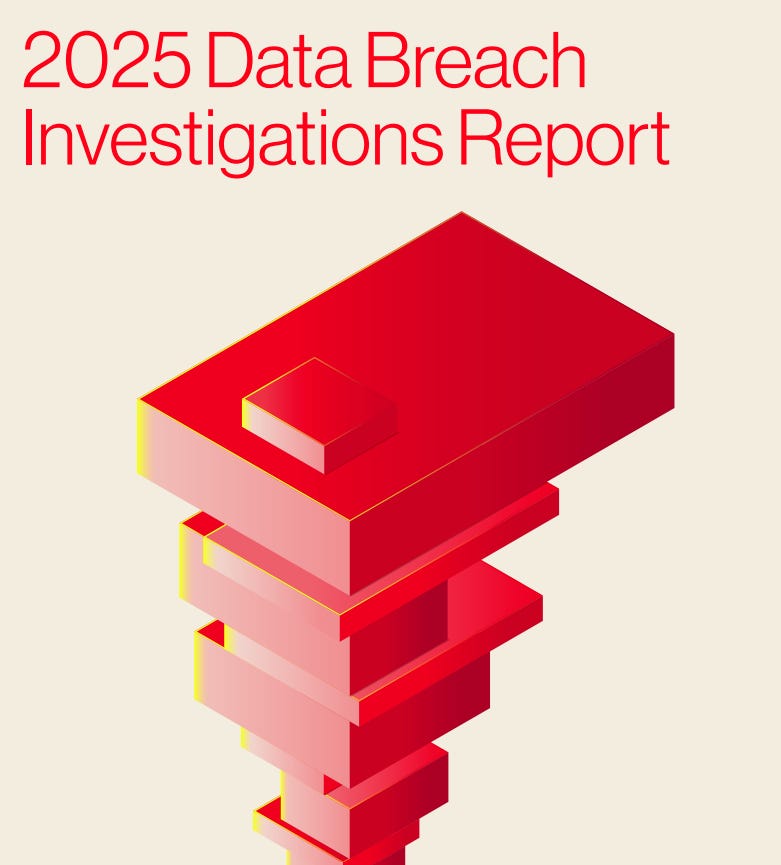Review of the 2025 Verizon DBIR
Heads Up, SMB Leaders: The 2025 Cyber Threat Landscape is Shifting - Are You Ready?
The latest Verizon Data Breach Investigations Report (DBIR) for 2025 is out, and it delivers some stark realities that small and medium-sized businesses (SMBs) can't afford to ignore. While headlines often focus on significant enterprise breaches, this report highlights the threats impacting organizations like yours. Let's break down the key takeaways and what they mean for your tech and cybersecurity strategy.
The Big Picture: More Attacks, More Complexity
The 2025 DBIR analyzed 22,052 security incidents, with 12,195 confirmed data breaches between November 2023 and October 2024. This volume alone underscores the relentless barrage of cyber threats facing all organizations. But beyond the sheer numbers, the nature of these threats is evolving in ways that demand your attention.
Key Shifts You Need to Know:
Third-Party Risks Explode: This is a major red flag for SMBs. The report reveals a doubling of breaches involving third parties, jumping from roughly 15% to a concerning 30%. This means that your security is increasingly tied to the security posture of your vendors, software providers, and partners. The MOVEit vulnerability is a prime example of how a weakness in a widely used tool can have far-reaching consequences. The takeaway? Scrutinize your vendors' security like your own.
Espionage is No Longer Just for Big Players: We've seen a dramatic 163% increase in espionage-motivated attacks, accounting for 17% of all breaches. While nation-state actors might come to mind, these attacks often have financial undertones and increasingly target sectors like manufacturing. SMBs in critical supply chains or those with valuable intellectual property must recognize this evolving threat landscape.
System Intrusion Takes Center Stage: Complex, multi-stage attacks involving hacking, malware, and ransomware now dominate, accounting for 53% of breaches, a significant jump from 36% in the previous report. Attackers are becoming more sophisticated, requiring a more layered and proactive defense.
Ransomware Remains a Relentless Foe: Despite some shifts in payment dynamics (median ransom down, refusal to pay up), ransomware is still a pervasive threat, implicated in 75% of System Intrusion breaches and a staggering 88% of breaches hitting SMBs. Don't fall into the trap of thinking you're too small to be a target – you are a target.
Credentials Still the Crown Jewels: Stolen credentials remain the top initial access vector. With billions of passwords exposed annually, weak password practices and a lack of Multi-Factor Authentication (MFA) are leaving the door wide open for attackers. MFA is no longer optional; it's a fundamental security control.
Vulnerability Exploitation on the Rise, Especially at the Edge: Attackers are increasingly targeting unpatched vulnerabilities, particularly in edge devices and VPNs. Worryingly, a significant 30% of sampled critical vulnerabilities remained unremediated. Patching isn't just an IT chore; it's a vital security imperative.
What This Means for Your SMB:
Elevate Third-Party Risk Management: You need a robust process for vetting your vendors' security. Ask challenging questions, review their security policies, and understand their incident response plans.
Prioritize Patch Management: Implement a rigorous and timely patching schedule for all systems and devices, especially those exposed to the internet. Pay close attention to CISA's Known Exploited Vulnerabilities (KEV) catalog.
Fortify Your Defenses Against Credential Theft: Implement strong password policies, encourage passphrases, and mandate MFA across your organization. Educate your employees about phishing and other social engineering tactics.
Assume You're a Target for Ransomware: Develop a comprehensive ransomware response plan with robust data backups (isolated and tested!), clear communication protocols, and decision-making frameworks.
Enhance Monitoring and Detection: Implement tools and processes to detect unusual activity within your network, especially regarding privileged accounts.
Educate Your Team: Human error remains a significant factor in breaches. Regular security awareness training is crucial to empower your employees to be your first line of defense.
Don't Be a Statistic - Take Action Now!
The 2025 Verizon DBIR paints a clear picture: the cyber threat landscape is becoming more complex and interconnected, and SMBs are squarely in the crosshairs. Understanding these key trends and implementing proactive security measures can significantly reduce your risk and protect your valuable assets. Don't wait for an incident to happen – use the insights from this report to strengthen your defenses today.
Key Questions for SMB Leaders:
How robust is our third-party risk management program?
Are we consistently and promptly patching all our systems and devices?
Is MFA enforced across our organization?
Do we have a tested ransomware recovery plan?
Are our employees adequately trained on cybersecurity best practices?
The time to act is now. Use the 2025 Verizon DBIR knowledge to make informed decisions and build a more resilient and secure future for your SMB.



